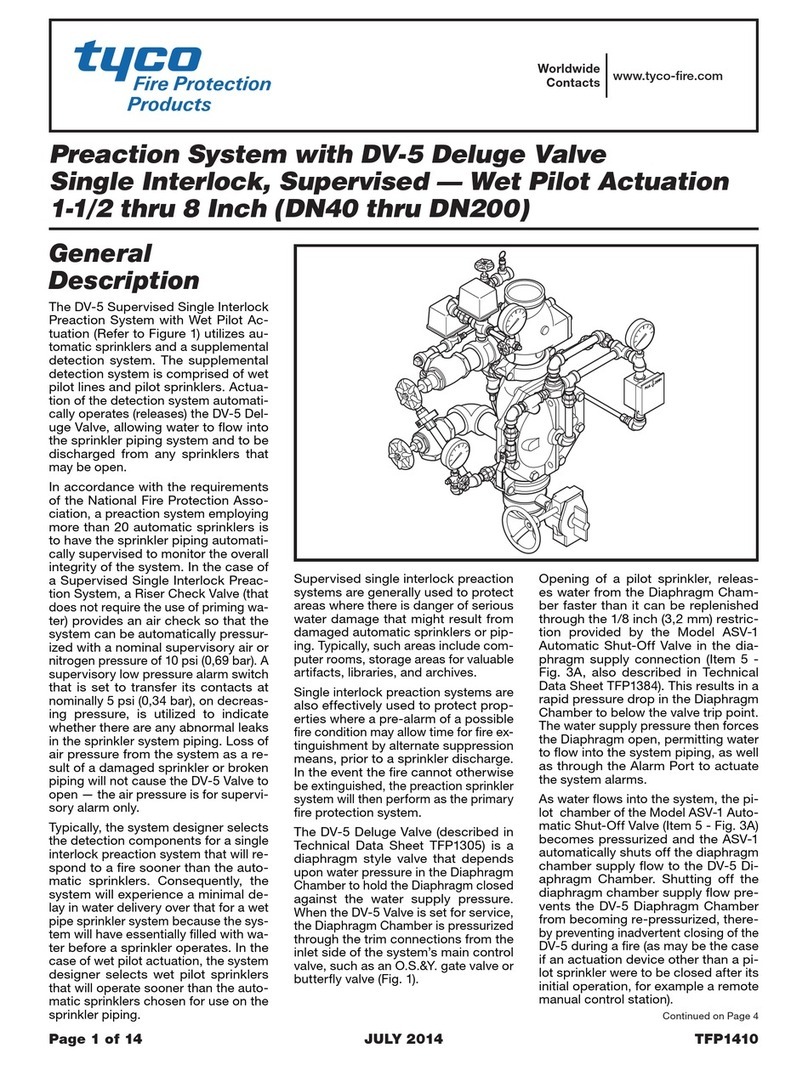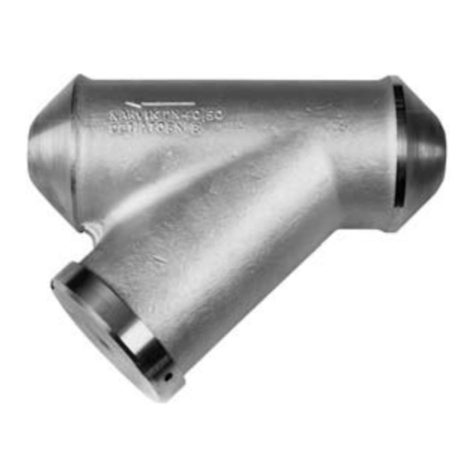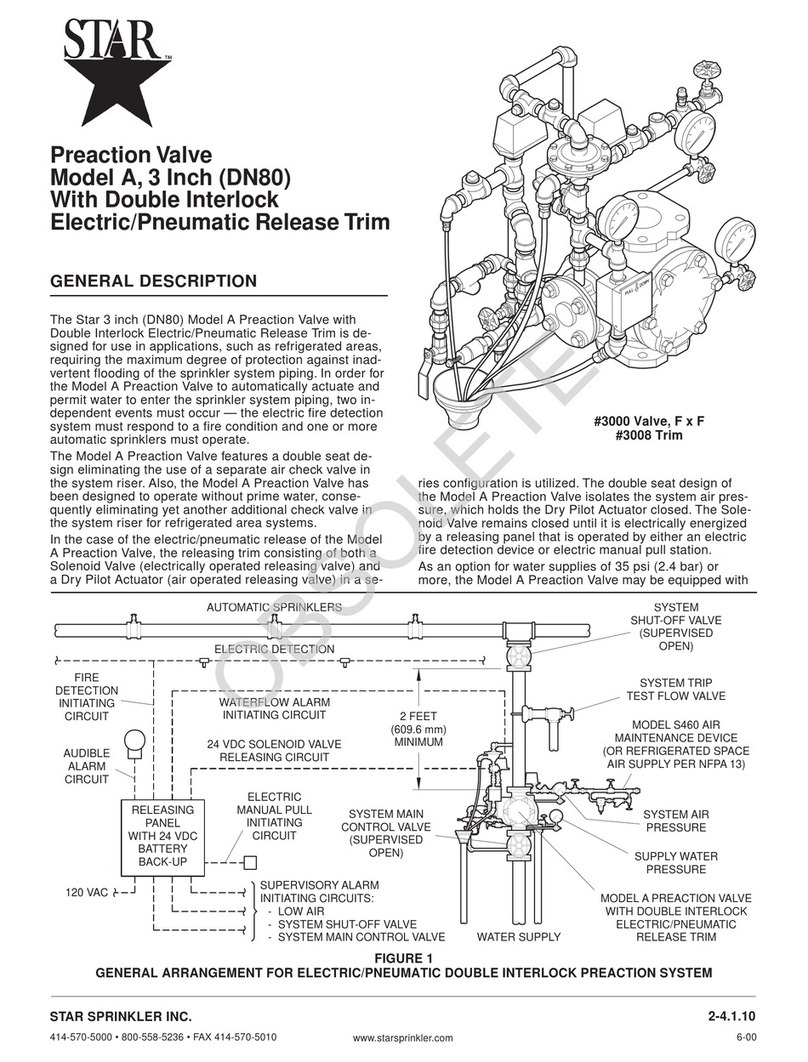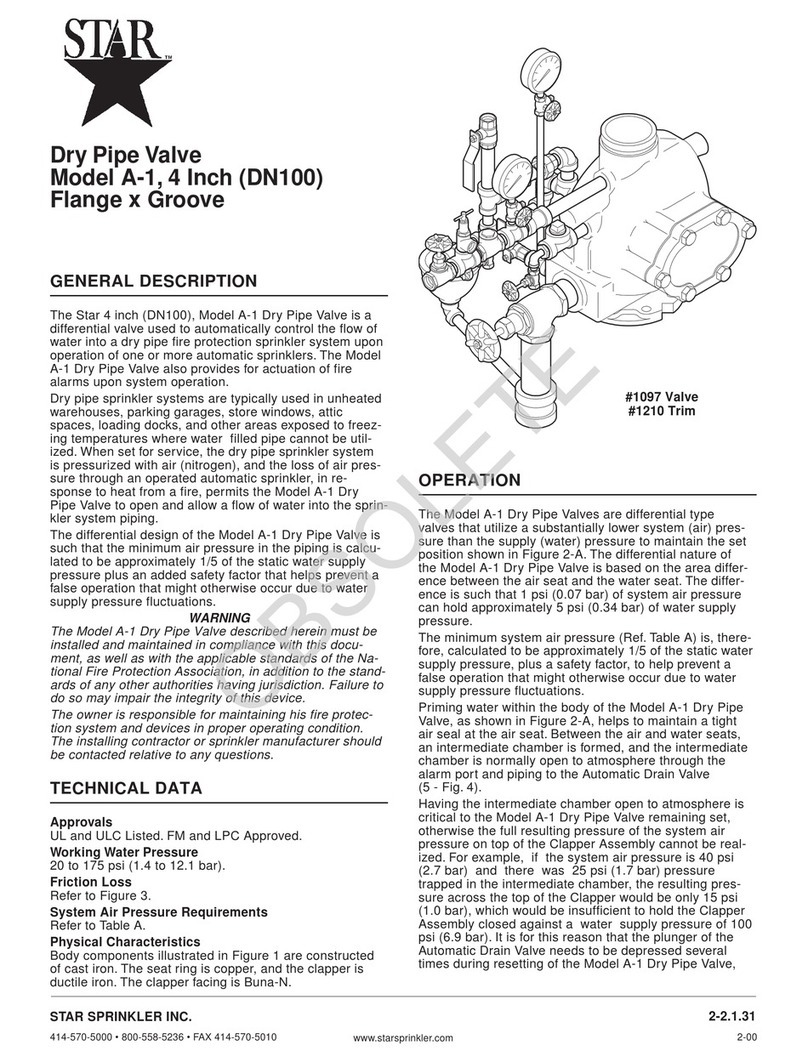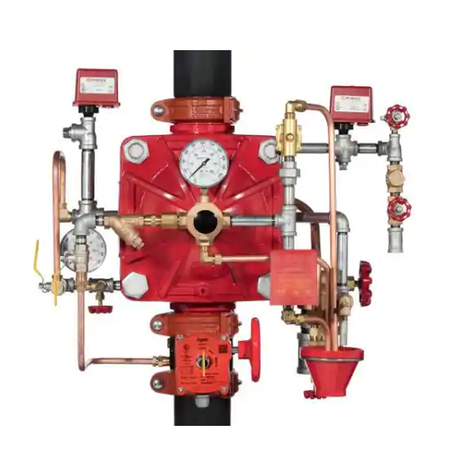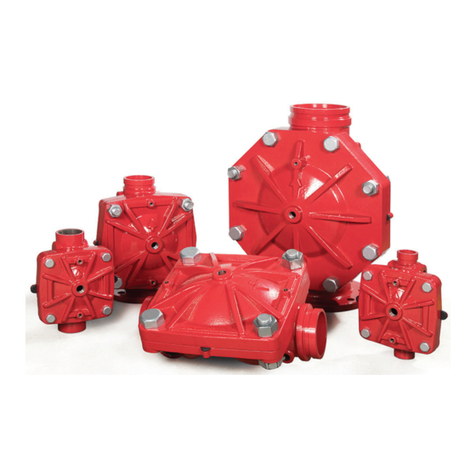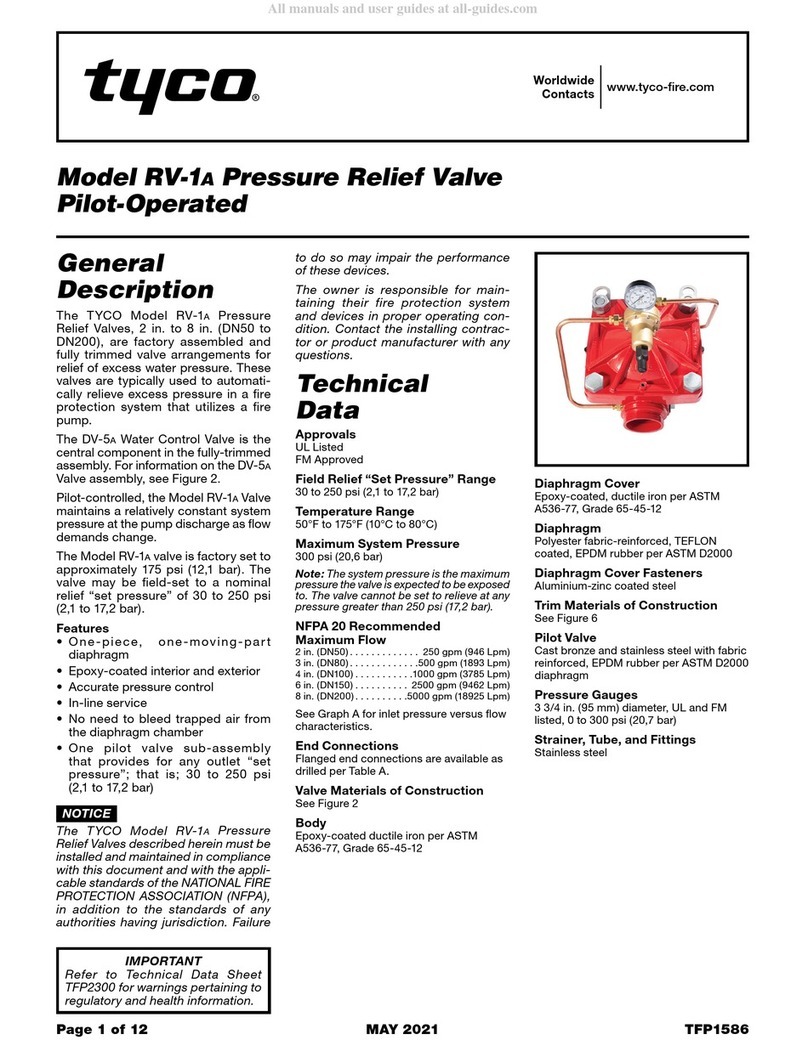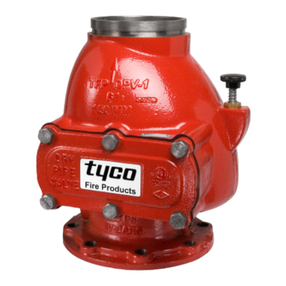
TFP1450
Page 10 of 28
Installation
The TYCO DV-5aValve is to be installed
in accordance with this section.
NOTICE
DV-5AAutomatic Water Control Valves
are designed to be used in freshwa-
ter systems. When the supply is from
an alternative source such as brackish
water, saltwater, or contains additives
such as foam, the limited warranty is
reduced to one year from the time of
installation. An increase in frequency of
inspections is required when the valve
is exposed to such supplies and other
corrosive conditions or chemicals that
could impact valve materials or the
operation of the assembly. The system
and all components must be designed
accordingly for the increased demand.
It is required to thoroughly flush the
valve and trim assembly with freshwa-
ter and reset to the set condition after
each operation.
Proper operation of the DV-5aValves
depends upon their trim being installed
in accordance with the instructions
given in this technical data sheet.
Failure to follow the appropriate trim
diagram may prevent the DV-5aValve
from functioning properly, as well as
void approvals and the manufacturer’s
warranties.
The DV-5aValve must be installed in a
readily visible and accessible location.
The DV-5aValve and associated trim
must be maintained at a minimum tem-
perature of 40°F (4°C).
Heat tracing of the DV-5aValve or its
associated trim is not permitted. Heat
tracing can result in the formation of
hardened mineral deposits that are
capable of preventing proper operation.
Always open the system control valves
slowly to avoid a sudden rush of water
entering the system.
The DV-5aValve is to be installed in
accordance with the following criteria:
Step 1. All nipples, fittings, and devices
must be clean and free of scale and
burrs before installation. Use pipe
thread sealant sparingly on male pipe
threads only.
Step 2. The DV-5aValve must be
trimmed in accordance with one of the
trim illustrations shown in Figures 6 or
7, as applicable.
Note: If the addition of an Alarm
Control Valve is desired or required by
the local AHJ, the Alarm Control Valve
noted as Item H in Figures 12 and 13 is
to be a separately ordered electroni-
cally supervised normally open valve.
Step 3. Care must be taken to ensure
that check valves, strainers, globe
valves, etc., are installed with the flow
arrows in the proper direction.
Step 4. Drain tubing to the Drip Funnel
must be installed with smooth bends
that will not restrict flow.
Step 5. The Main Drain and Drip Funnel
Drain may be interconnected provided
a check valve is located at least 12
inches (300 mm) below the Drip Funnel.
Step 6. Suitable provision must be
made for disposal of drain water. Drain-
age water must be directed such that
it will not cause accidental damage to
property or danger to persons.
Step 7. Connect the Diaphragm Supply
Valve to the inlet side of the System
Main Control Valve in order to facilitate
setting of the DV-5aValve (Ref. Figures
12 or 13, as applicable).
Step 8. An Inspector’s Test Connection
is to be located on the sprinkler system
at the most hydraulically demanding
location.
Step 9. A suitable automatic air (nitro-
gen) supply, as described in the appli-
cable Electric/Electric Actuation or
Electric/Pneumatic Actuation sub-sec-
tion, is to be installed in accordance
with the applicable technical data
sheet. The minimum air pressure is to
be in accordance with the referenced
sub-sections.
Step 10. A desiccant dryer, when spec-
ified, is to be installed between a drip
leg and the Air Maintenance Device.
Step 11. The Low Pressure Switch on
falling pressure is to be adjusted as
follows:
• For Electric/Pneumatic Actuation,
set the low pressure alarm setting at
approximately 6 psi (0,4 bar) below
the minimum system service pres-
sure requirement shown in Graph B.
•
For Electric/Electric Actuation,
set the low air pressure switch at
3 psi (0,21 bar) below the system
air pressure.
Step 12. Unused Pressure Alarm
Switch connections must be plugged.
Step 13. The Pressure Relief Valve on
rising pressure is to be at 5 psi (0,34 bar)
higher than the required system air
pressure, or be reset in accordance
with the requirements of the authority
having jurisdiction.
To reset the Pressure Relief Valve, first
loosen the jam nut and then adjust the
cap accordingly, clockwise for a higher
pressure setting or counter clockwise
for a lower pressure setting. After ver-
ifying the desired pressure setting,
tighten the jam nut.
Step 14. Conduit and electrical con-
nections are to be made in accordance
with the applicable standards of the
approval agency.
Step 15. Before a system hydrostatic
test is performed, the DV-5aDiaphragm
Chamber is to be depressurized, the
Automatic Drain Valve is to be tem-
porarily replaced with a plug, and the
Diaphragm Cover Bolts must be uni-
formly and securely tightened using a
cross-draw sequence.After tighten-
ing, double-check to make certain that
all of the Diaphragm Cover Bolts are
securely tightened. Refer to Table B in
the Care and Maintenance section for
torque specifications.


